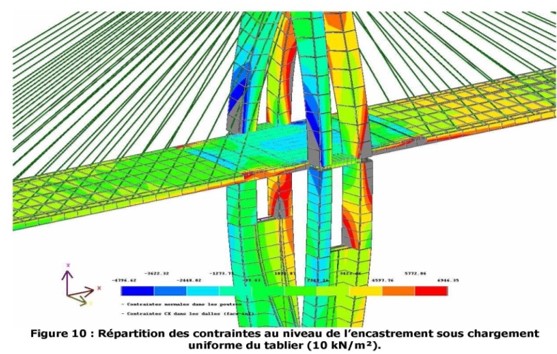Project
The source of the Oued Bou Regreg lies in the mid Atlas Mountains. This river is important both historically and symbolically as Rabat, capital of Morocco, was built at its mouth.
Within the framework of the project for the motorway around Rabat, the Morocco National Motorway Company wished to mark this crossing with an exceptional work: a cable-stayed bridge.
The wideness of the gap to cross, the steep walls, the relief rising 150m above the Oued and the mediocre quality ground in the area around the Oued, require a wide span crossing solution, therefore limiting the number of supports.
The project’s design achieves the goals of strong and unique architecture, adapted to the site and its constraints, key features of the first cable-stayed bridge in Morocco.
The cable-stayed viaduct rests on 4 leg pylons with a shape inspired by Moroccan architecture, characterised by its well-maintained cultural heritage enriched with touches of modernity.
These pylons contribute to the stability of the project, providing the rest of the structure (deck and stays) with lightness and slenderness without intermediate supports.
Services
setec tpi led the design project management services during the outline audit and preliminary phases (APS, APD) as well as the preparation of the client’s tendering documentation.
Key information
Client : Société Nationale des Autoroutes du Maroc (ADM) / Moroccan National Motorway Company
Design JV : Strates (H. Vadon) Architect, setec tpi (PM leader), setec Maroc, terrasol
Montant de travaux : 70 000 000 € HT
Period : 2008 – 2016

